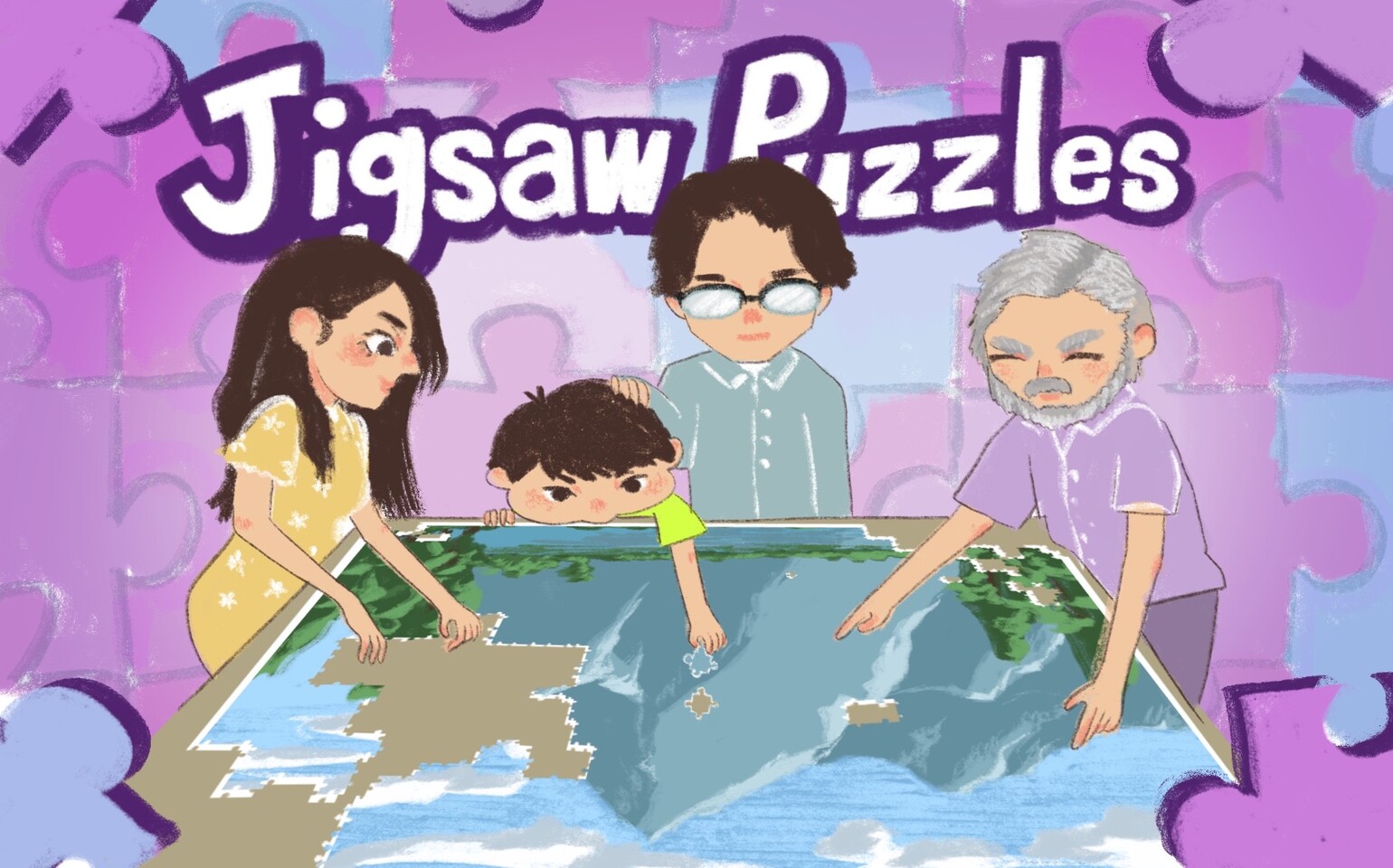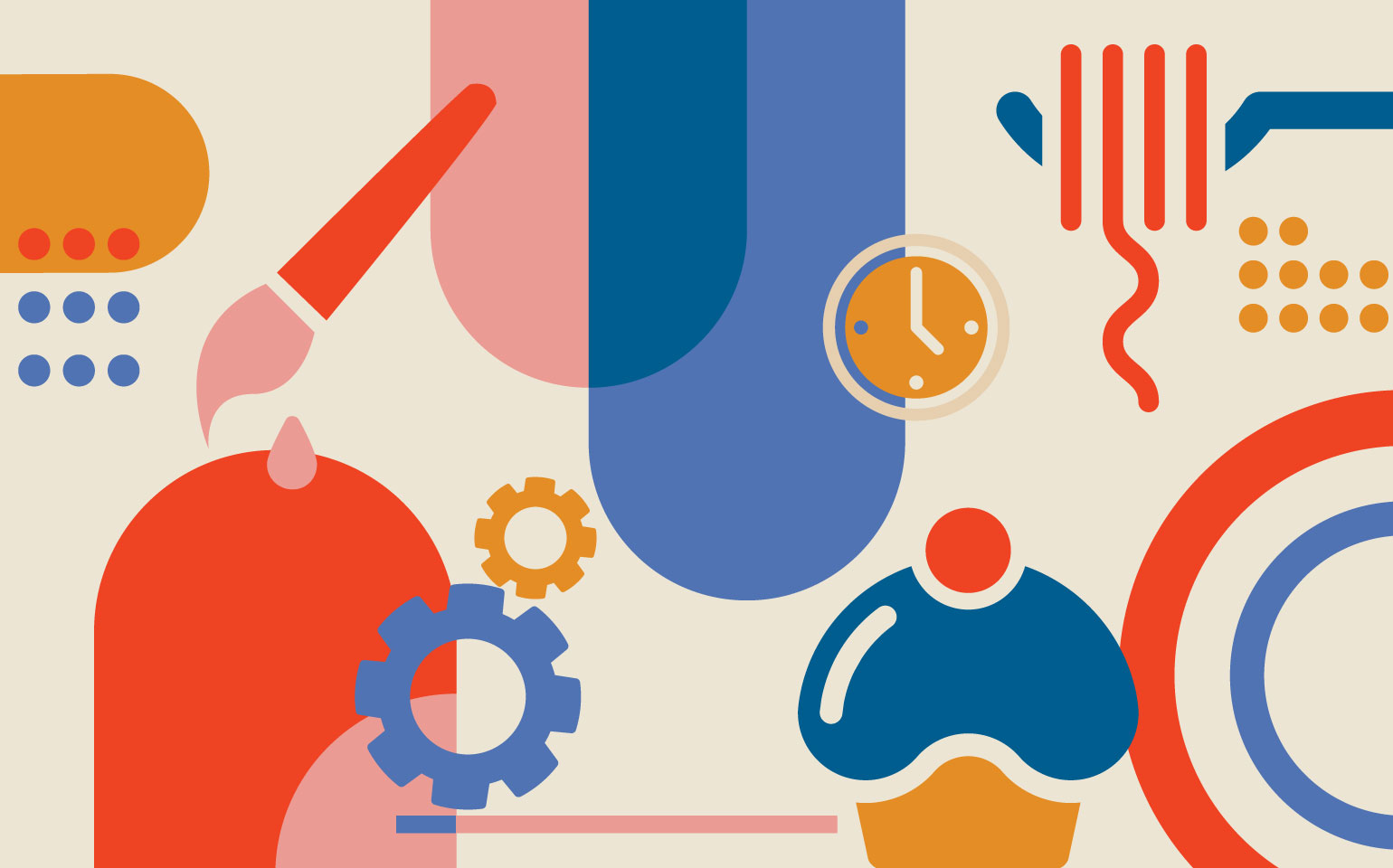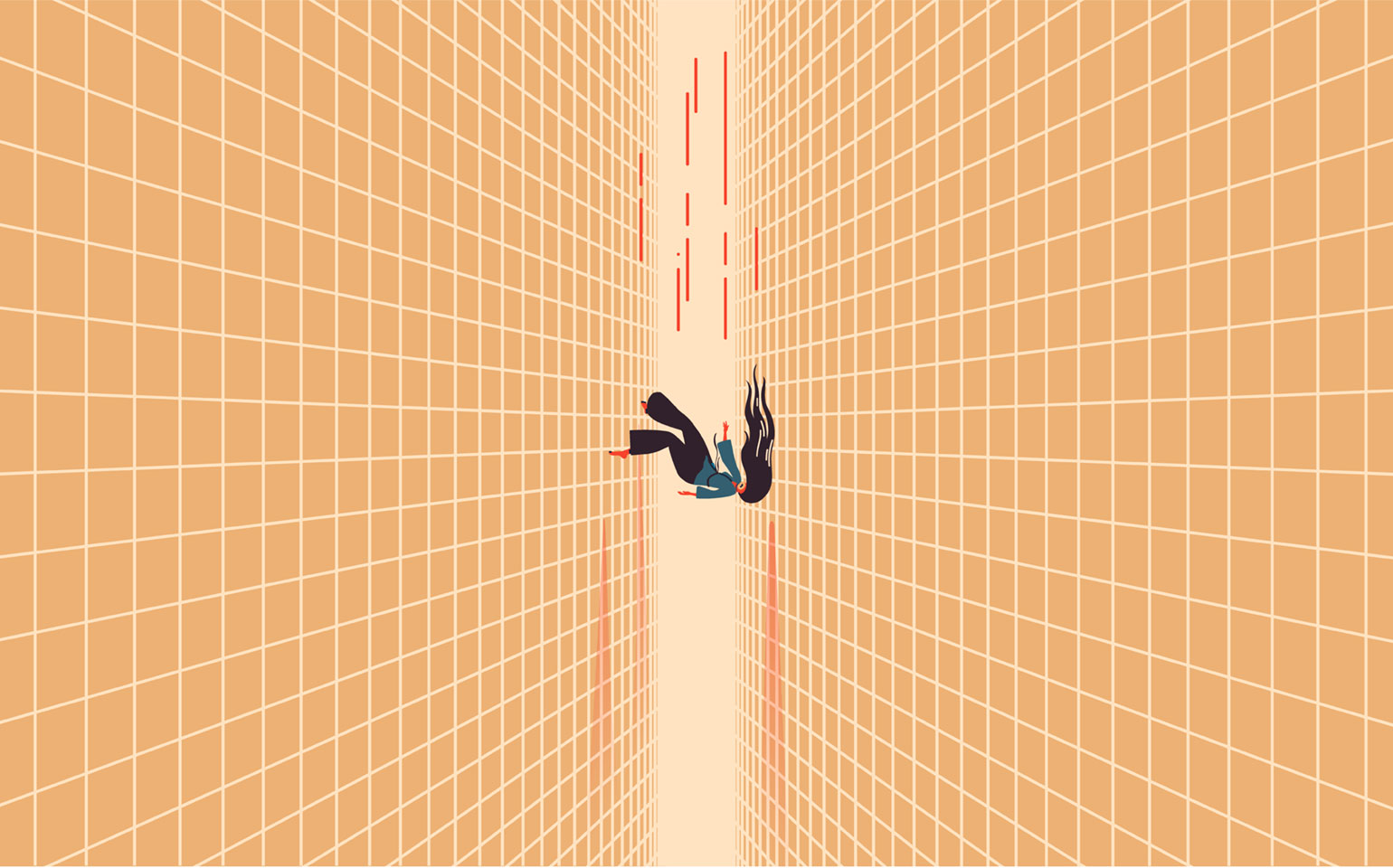Jigsaw Puzzles: A Great Hobby for All Ages
Placing the last piece of a jigsaw puzzle can be joyful, satisfying, and frustrating all at once. In my experience, it is mostly the first two emotions that emerge. This happens the most when I solve puzzles with a moderate level of difficulty. Solving those types of puzzles is highly relaxing for me because it allows me to multitask. For example, while completing Galison’s Spring Street jigsaw puzzle, I listened to episodes of Tara Tremendous and the audiobook version of Holly Jackson’s As Good As Dead. I have finished at least two podcasts (each about 2 to 4 seasons long) while puzzling.
There have been countless times that I would tell myself, “I am going to do this for five minutes, then I have to go back to work,” and ended up puzzling for at least fifteen minutes. It is easy to get hooked on puzzles, and it’s a sure-fire way to pass time (whether that was the intention or not).
I find puzzles addicting because I know that each piece put in place is crucial to make the whole picture, which always excites me.
However, there was one instance that was more frustrating than satisfying. When I placed the last piece of a 1000-piece puzzle, I was annoyed with the fact that it was unnecessarily hard. It had many irregular shaped pieces and much of the puzzle was nearly the same shade of blue. This experience showed me that solving a hard puzzle would not be something I would attempt again, as it was frustrating and not highly enjoyable. Nevertheless, because of my determination to complete the puzzle, I felt a sense of accomplishment when it finally happened. Yes, the puzzle frustrated me, but it also acted as a test of my perseverance and determination in finishing what I started. If I had given up, I would have been more discouraged in the future when attempting something challenging.
While many may think the popularity of puzzles is as good as dead, they could not be further from the truth. Estimates suggest that about 1.8 billion jigsaw puzzles are sold annually in the United States of America. One reason for their popularity is that there is a variety of puzzles to choose from. From the canals of Venice to scenes from popular movies, there is a puzzle for nearly everything. The sheer number of puzzles makes it hard not to find one that sparks interest. Social media platforms, especially Instagram, play a role in promoting jigsaw puzzles. Celebrities like Tom Holland and Oprah Winfrey have shown their progress with puzzles through such platforms, thus inspiring their millions of followers start puzzling.
However, when puzzles were first invented, they were intended for something completely different than for pleasure: teaching children geography. Cartographer John Spilsbury is credited with creating the first jigsaw puzzle in the 1760s. His puzzles consisted of a map of Europe glued to a flat piece of wood; each piece was a different country. Naturally, jigsaw puzzles have come a long way from cut-out maps. While some puzzles are still used for educational purposes, nowadays they are more for pleasure. Today, companies such as Ravensburg, Galison, and Eurographics mass produce their puzzles on paperboard, and there is a wide variety of images to choose from.
My mom and I usually buy puzzles made by Galison. Their puzzles are not overly complicated and have wonderful designs. The 500-piece puzzles are perfect for those that want to solve one that’s easier. Surprisingly, we completed Galison’s Merry Moonlight Skaters in under 24 hours. As my dad always reminds me, “many hands make for light work.” This is true for puzzling and I believe that working on puzzles with family or friends is a great bonding opportunity. The puzzles my mom and I complete together often ended up in a frame, especially during the holiday season. Wondering what to get a family member or friend as a present? Jigsaw puzzles are always a safe bet! I was thrilled when I received a couple of jigsaw puzzles last Christmas. One was a Harry Potter-themed puzzle, which my brother gave me. I also received puzzles from my aunt, who shares my love for puzzles.
One night when my family was visiting, my mom, aunt, and cousin helped me finish a puzzle that I was currently solving. My grandmother was also sitting with us, content that we were having a fun time together. As four people were working on the puzzle, it wasn’t a surprise to any of us that we were able to complete a large portion of the puzzle. In fact, the general easiness and relaxing nature in solving this puzzle was what made my aunt interested in puzzles again. Overall, that was a fun night and a reminder that solving jigsaw puzzles is a good social activity.
Completing jigsaw puzzles may also benefit the solver’s health. Numerous websites, such as Forbes and Reader’s Digest, have written articles that highlight the health benefits of puzzling, including stress relief and possibly reducing the risk of getting dementia. Other benefits include a greater attention to detail, an improvement in teamwork abilities, and problem-solving skills.
Solving a jigsaw puzzle is a great hobby for all ages. Anyone can reap the benefits of doing jigsaw puzzles, whether it is health-related or social, there is something for everyone to gain.
When people solve jigsaw puzzles together, they are strengthening their brain and engaging with other people. This improves their mental and physical health, along with their social well-being.
In addition, solving puzzles can be beneficial to hand-eye coordination, critical thinking skills, and more. Puzzlers can also enjoy the thrill and challenge of completing a puzzle. Puzzling is a fantastic way to spend time with friends and family without the accompaniment of a screen.
So, what are you waiting for? Somewhere on a shelf, there is a puzzle that is yet to be solved. Have fun puzzling!




